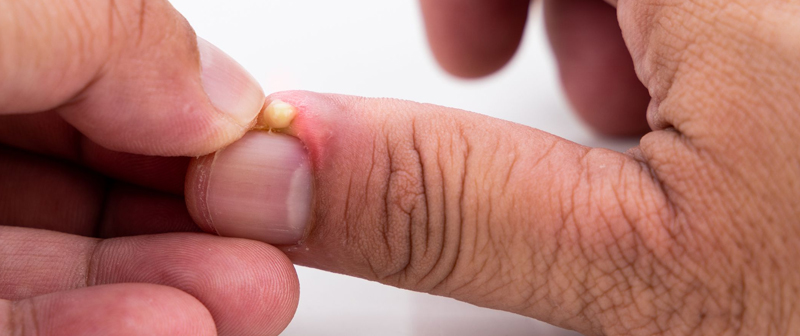Understanding Incision and Drainage of Abscesses Dubai

Abscesses are common medical conditions characterized by painful, pus-filled swellings that can occur anywhere in the body. When an abscess forms, it is crucial to seek timely and effective treatment to alleviate discomfort and prevent complications. In Dubai, the procedure known as Incision and Drainage of Abscesses Dubai is a key treatment method for addressing abscesses. This article provides a comprehensive understanding of this procedure, its importance, and what to expect if you require this treatment.
What is an Abscess?
An abscess is a localized collection of pus that forms as a result of an infection. It can develop in various tissues of the body, including the skin, organs, or other internal structures. The pus within an abscess consists of dead white blood cells, bacteria, and tissue debris, all of which contribute to the swelling and pain associated with the condition.
Common causes of abscesses include:
- Bacterial Infections: The most frequent cause of abscesses, particularly on the skin, is a bacterial infection. Staphylococcus aureus is a common bacterium involved in such infections.
- Blocked Glands or Hair Follicles: Blockage can trap bacteria and lead to infection and abscess formation.
- Foreign Bodies: Objects like splinters or shards that become embedded in the skin can result in abscesses.
- Underlying Health Conditions: Conditions such as diabetes or a weakened immune system can increase susceptibility to abscesses.
Why Incision and Drainage is Necessary
Abscesses are not only painful but can also pose serious health risks if left untreated. The infection can spread to nearby tissues or enter the bloodstream, leading to severe complications such as cellulitis or sepsis. Incision and drainage is a crucial procedure designed to relieve the pressure, remove the pus, and facilitate the body's natural healing process.
The Incision and Drainage Procedure
In Dubai, incision and drainage is performed by skilled medical professionals who ensure a high standard of care. Here’s a detailed overview of the procedure:
- Initial Assessment: The process begins with a thorough examination of the abscess. The healthcare provider assesses the size, location, and severity of the abscess and reviews your medical history to identify any potential risks or contraindications.
- Anesthesia: To minimize discomfort during the procedure, a local anesthetic is administered to numb the area around the abscess. This ensures that you feel minimal pain while the procedure is performed.
- Incision: Once the area is adequately numb, a small incision is made in the abscess. The incision is carefully placed at the most swollen part of the abscess to allow for optimal drainage.
- Drainage: After making the incision, the healthcare provider gently presses the abscess to encourage the pus to drain out. In some cases, additional tools may be used to ensure complete removal of the pus. Effective drainage is essential to prevent the abscess from recurring.
- Cleaning and Dressing: After the pus is removed, the area is cleaned with an antiseptic solution to minimize the risk of further infection. A sterile dressing or bandage is then applied to the incision site to protect it and aid in the healing process.
- Post-Procedure Care: You will receive specific instructions on how to care for the incision site at home. This usually involves keeping the area clean and dry, changing the dressing regularly, and avoiding activities that might interfere with the healing process.
Recovery and Aftercare
Recovery from an incision and drainage procedure is generally quick, with most patients experiencing significant relief from pain and discomfort shortly after the procedure. However, some tenderness and swelling around the incision site are normal and should gradually subside.
To support a fast and smooth recovery, follow these guidelines:
- Adhere to Aftercare Instructions: Follow the instructions provided by your healthcare provider regarding wound care, medication, and activity restrictions.
- Complete Prescribed Medications: If antibiotics are prescribed, take them as directed to prevent any remaining bacteria from causing further issues. Finish the full course of medication even if you start to feel better.
- Monitor the Incision Site: Keep an eye on the incision site for any signs of infection, such as increased redness, swelling, or pus discharge. Contact your healthcare provider if you notice any concerning symptoms.
- Rest and Hydrate: Ensure you get adequate rest and stay hydrated to support your body’s healing processes.
- Avoid Strenuous Activities: Refrain from engaging in activities that could stress or irritate the incision site.
Preventing Abscesses
While not all abscesses can be prevented, certain measures can help reduce the risk:
- Maintain Good Hygiene: Regularly wash your hands and body with soap and water to minimize bacterial exposure. Pay attention to areas prone to sweating or oil buildup.
- Proper Wound Care: Clean and cover any cuts, scrapes, or other skin injuries promptly to prevent infection.
- Avoid Sharing Personal Items: Do not share items such as towels or razors that come into contact with your skin.
- Manage Chronic Conditions: Effectively managing chronic conditions like diabetes can reduce your risk of developing abscesses.
- Seek Early Treatment: If you notice early signs of an abscess or infection, seek medical attention promptly to prevent the condition from worsening.
Conclusion
Understanding the procedure for incision and drainage of abscesses is essential for anyone dealing with this painful condition. In Dubai, this procedure is performed with expertise and care, ensuring that patients receive effective treatment and experience a swift recovery. By following post-procedure care instructions and taking preventive measures, you can facilitate healing and maintain your overall health. If you suspect you have an abscess or are experiencing symptoms, seeking prompt medical attention is vital for a quick and effective resolution.